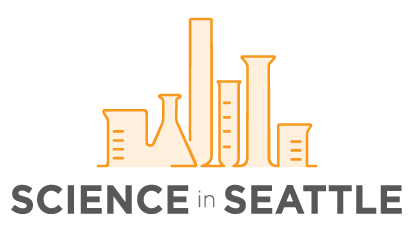This week we profile a recent publication in EMBO Reports from first author Yan Ting (Blair) Zhao (pictured, right) and the laboratory of Dr. Hannele Ruohola-Baker (left) at UW
Can you provide a brief overview of your lab’s current research focus?
The Ruohola-Baker laboratory studies how nature makes a human from a single cell (a fertilized egg), how to protect and ultimately unleash that same potential in stem cells by teaching them how to survive, stay young and differentiate, and how abnormalities cause diseases to arise. During recent years, the laboratory has shown that microRNAs and HIF pathways, and metabolism in general, play key roles in regulating adult and embryonic stem cell self-renewal in model organisms as well as in human embryonic stem cells and induced pluripotent stem cells.
The laboratory presently works on three questions:
1) the metabolic determinants of stem cells
2) the molecular mechanism of reversible quiescence in stem cells and cancer
3) decoding regeneration using computer-designed proteins and organoids
The mechanisms that govern stem cell regenerative competence still remain unclear. The laboratory, in collaboration with the Institute for Protein Design (IPD) has developed novel computer-designed protein-based tools to dissect and govern regeneration by signaling pathways, such as Tie2 and FGFr, as well as precise epigenetic regulation. We have generated computer-designed Ang/Tie2 super-agonists for vascular protection in regeneration. This unprecedented, valency-based exactness to manipulate Tie2 signaling pathway allows us to analyze and treat inflammation-induced traumatic brain injuries that may be causal for Alzheimer’s (Zhao et al. EMBO Reports, 2021; Ben-Sasson et al. Nature 2021; Divine et al. Science 2021).
What is the significance of the findings in this publication?
In Zhao et al. 2021, we have precisely delineated the molecular basis of the Tie2 pathway using computationally designed protein scaffolds and generated Tie2 superagonists to promote angiogenesis. These findings have tremendous potential for future tissue regeneration, wound healing, and cancer therapies. We found that the valency of Ang1’s receptor-binding domain, F-domain determines Tie2 signaling outcome in which high F-domain valency scaffolds are agonist, can activate pAKT, colocalize with alpha5 integrin, and promote vascular stabilization, while low F-domain valency scaffolds act as antagonists.
What are the next steps for this research?
Our lab also demonstrated that super clustering Tie2 receptors using 2D protein sheets conjugated with F-domains can recruit adherens junction components in activated Tie2 superclusters (Ben-Sasson et al 2021, Nature). We now hypothesize that Tie2 activation may be the initiator for tight junction formation, increasing endothelial cell, and thereby vascular stability. We are also interested in dissecting the function of Tie2-integrin association in endothelial cells.
If you’d like us to mention your funding sources, please list them.
This work is supported by gifts from the Hahn Family and partly by grants from the National Institutes of Health R01GM097372, R01GM083867, 1P01GM081619, U01HL099997, UO1HL099993 for HR-B; Department of Defense PR203328 for HR-B and DB; NIH/NIDCR #T90 DE021984, TR002318 for YTZ; 5R21NS09 9654and 1R01NS118247 for DLS

